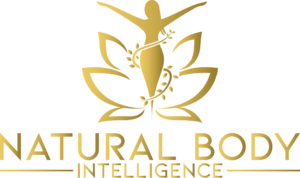Hay Fever: A Cleansing Crisis, Not a Disease
Hay fever is often described as an allergic reaction to pollen, but from a Natural Hygiene perspective, it is far more than that. It is a healing process—a cleansing crisis through which the body expels accumulated toxins from the bloodstream and mucous membranes.
Rather than being an attack by nature or an immune system gone wrong, hay fever is the body’s intelligent effort to restore balance. It is a seasonal purification, often triggered when the environment warms, circulation increases, and the body takes advantage of the changing conditions to release stored waste.
What Hay Fever Really Is
The nose, eyes, throat, and sinuses are lined with delicate mucous membranes designed to keep the airways clean and moist. When the body’s internal environment becomes loaded with waste—through poor diet, lack of rest, and exposure to chemicals—these membranes become congested.
When spring and summer arrive, the warmth and increased oxygen stimulate the lymphatic system. The body sees its opportunity to purge, often through runny nose, watery eyes, sneezing, and itching. These are not symptoms of a defect—they are signs of elimination. The body is throwing off waste through its safest channels.
Pollen merely acts as the final trigger—a natural irritant that helps the body release toxins it was already trying to expel.
The Terrain Theory Perspective
Natural Hygiene and the terrain model both teach that disease arises not from external invaders but from internal uncleanliness. The cleaner the terrain, the less reaction to pollen or dust. When the system is overloaded, however, the body must find a way to remove the burden, and mucous discharge is one of its preferred methods.
Antihistamines and nasal sprays stop the discharge—but this only traps the waste inside. The body will then be forced to find another outlet later, often through skin eruptions, fatigue, headaches, or deeper respiratory conditions.
What is called “hay fever” is simply one of the body’s annual cleaning programmes. If you support it, rather than suppress it, the symptoms lessen each year until they disappear completely.
The Common Causes of Hay Fever
- Over-acidic diet: Processed food, dairy, meat, and refined sugar create mucus and inflammation.
- Toxin build-up: Poor elimination through the bowels, skin, and kidneys leads to pressure on the sinuses.
- Dehydration: Lack of fresh fruit and water thickens mucus.
- Nerve exhaustion: Stress reduces the body’s ability to handle detoxification efficiently.
- Lack of fresh air and sunlight: Indoor living limits oxygen exchange and weakens the respiratory system.
When these causes are removed, hay fever fades naturally because the need for this form of elimination no longer exists.
How to Support the Body Naturally
The key is not to fight hay fever but to assist the body’s cleansing process in the gentlest way possible.
- Simplify your diet. Eat more raw fruits and vegetables—especially water-rich fruits like oranges, melons, grapes, and apples. Avoid dairy and mucus-forming foods.
- Hydrate properly. Pure water and juicy fruits help thin mucus and speed elimination.
- Fast or rest when symptoms are strong. The less energy spent on digestion, the more energy is available for healing.
- Breathe deeply in nature. Fresh air oxygenates the blood and helps move lymph.
- Allow the process. Sneezing, watering eyes, and mucus flow are temporary cleansing signs. Let them happen and keep the body at rest.
- Sleep early and well. The nervous system repairs during rest, reducing hypersensitivity.
As the body purifies, the seasonal reaction weakens and may disappear altogether. Many Natural Hygiene practitioners find that, after a few years of clean living, they no longer experience hay fever at all—even in high-pollen environments.
A Natural Response to an Unnatural Lifestyle
It’s easy to blame nature for hay fever, but nature is not the enemy—it is the mirror. The pollen is not the cause; it is the reminder. The real cause lies within: years of wrong food, shallow breathing, late nights, and overwork.
When you align your lifestyle with nature’s laws, you and the environment cease to be in conflict. Pollen becomes harmless because the body has nothing left to discharge.
In Summary
Hay fever is not an allergy but a purification. It shows that the body is alive, intelligent, and still trying to protect you. Suppressing it only delays healing; understanding it allows you to work with the body, not against it.
By living simply—eating clean, resting deeply, breathing freely—you allow the body to complete its cleansing naturally. With each passing season, symptoms fade, and what was once called hay fever becomes nothing more than another reminder of nature’s wisdom at work.


